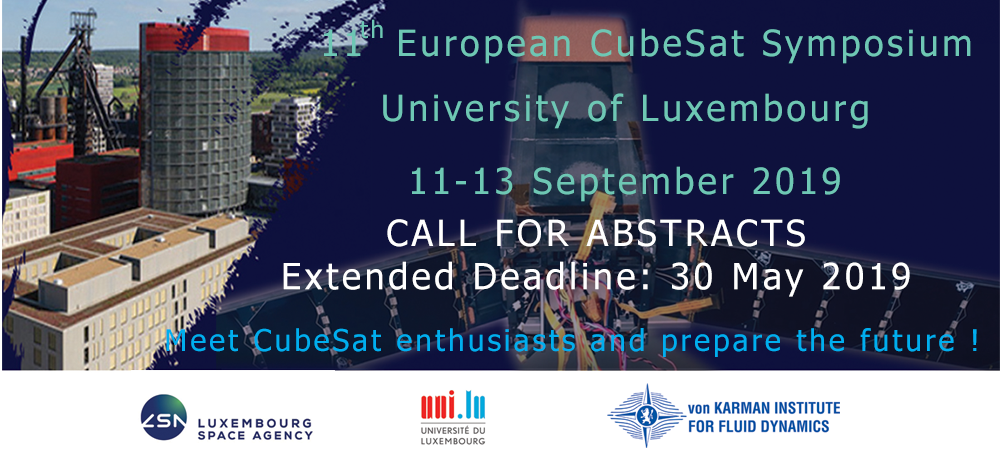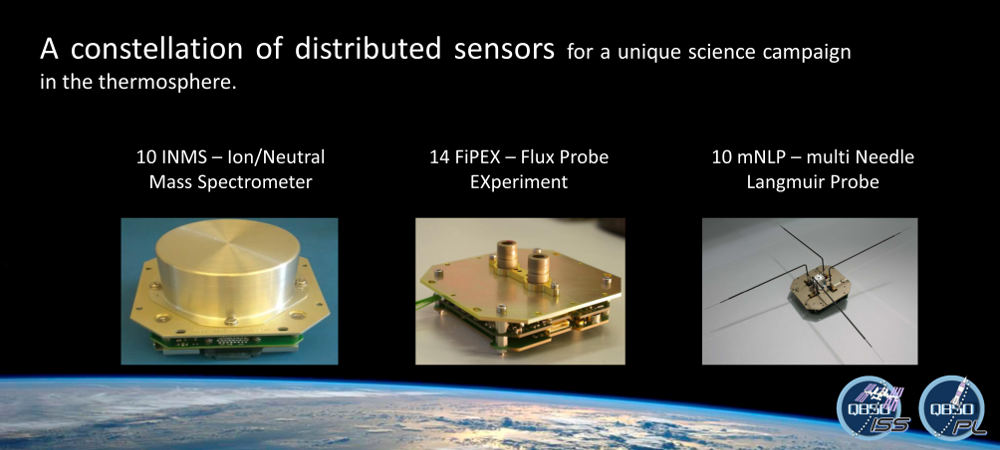Mission Objectives
|
|
The QB50 mission demonstrates the possibility of launching a network of CubeSats built by Universities Teams all over the world to perform first-class science in the largely unexplored lower thermosphere.
Space agencies are not pursuing a multi-spacecraft network for in-situ measurements in the lower thermosphere because the cost of a network of 50 satellites built to industrial standards would be extremely high and not justifiable in view of the limited orbital lifetime. No atmospheric network mission for in-situ measurements has been carried out in the past or is planned for the future. A network of satellites for in-situ measurements in the lower thermosphere can only be realised by using very low-cost satellites, and CubeSats are the only realistic option.
|
|
|
Scientific ResearchWhy? Another objective of the QB50 project is to carry out atmospheric research within the lower thermosphere, between 200 - 380km altitude, which is the least explored layer of the atmosphere. To explore this region, atmospheric explorers were flown in the past in highly elliptical orbits (typically 200 km perigee, 3000 km apogee); they carried experiments for single-point, in-situ measurements but the time spent in the region of interest was only a few tens of minutes. By contrast, QB50 will provide multi-point, in-situ measurements for a time period on the order of months, instead of minutes. Nowadays, sounding rocket flights provide the only in-situ measurements. While they do explore the whole lower thermosphere, the time spent in this region is rather short (a few minutes). There are only a few flights per year and they only provide measurements along a single column. Powerful remote-sensing instruments on board Earth observation satellites in higher orbits (600–800 km) receive the backscattered signals from atmospheric constituents at various altitudes. While this is an excellent tool for exploring the lower layers of the atmosphere up to about 100 km, it is not ideally suited for exploring the lower thermosphere because there the atmosphere is so rarefied that the return signal is weak. The same holds for remote-sensing observations from the ground with lidars and radars. The multi-point, in-situ measurements of QB50 will be complementary to the remote-sensing observations by the instruments on Earth observation satellites and the in-situ measurements by sounding rockets. All atmospheric models, and ultimately thousands of users of these models, will benefit from the measurements obtained by QB50 in the lower thermosphere. How? Three different types of science sensors, each of which is part of a science set, are used to fulfill the objective of carrying out atmospheric research in the lower thermosphere. These science sensors include the Ion-Neutral Mass Spectrometer (INMS) as part of set 1, the Flux-Φ-Probe Experiment as part of set 2 and multi-Needle Langmuir Probe (m-NLP) as part of set 3.
Most of the QB50 CubeSats accommodate one of the three sets as their payload and will operate it for few months. Each of the three science sensors have their own set of requirements and interface specification which is specified in their respective Interface Control Document (ICD).
|
|
|
In-Orbit Demonstration (IOD)The third objective of the QB50 Project is to serve as a platform for technology demonstration. A handful of QB50 CubeSats, which are not accommodating the science sensors, are carrying their own payload, which are mainly technology that is to be qualified in space. Two of these CubeSats - QARMAN and InflateSail - which are part of the QB50 Consortium are examples of IOD mission and exemplify the third objective of the Project. QARMAN QARMAN (QubeSat for Aerothermodynamic Research and Measurements on AblatioN) is a triple unit CubeSat which is being built by VKI for the purpose of studying the atmospheric re-entry process and the associated aerothermodynamic phenomena. It will incorporate an ablative Thermal Protection System (TPS) to the structure to protect the CubeSat from extreme heating during re-entry. Similarly, the side panels will be thermally insulated with appropriate TPS for a prolonged functionality of the subsystems. It will also demonstrate the use of a passive de-orbiting system and also the possibility of non-powered rendez-vous. InflateSail InflateSail is a 3U CubeSat built by the Surrey Space Centre (SSC) whose primary objective is the flight demonstration of an inflatable rigidisable sail structure. A key part of the InflateSail technology demonstration is the inflation and in-orbit rigidisation using Cool Gas Generators (CGGs). InflateSail consists of a 1 m long inflatable rigidisable cylindrical boom, which supports approximately a 3m x 3m tape-spring supported sail. It has been placed into a sun synchronous orbit at 505 km by a PSLV launcher on 23rd June 2017.
|
|
|
EducationQB50 invited universities worldwide to join the project and send a satellite to space. Numerous proposals have then been received and the CubeSats been selected. As a consequence the QB50 CubeSats have been designed and built by a great number of young engineers, supervised by experienced staff at their universities and guided by the QB50 project through reviews and feedback. Those engineers did not only learn about space engineering in theory but will leave their universities with hands-on experience.
|






